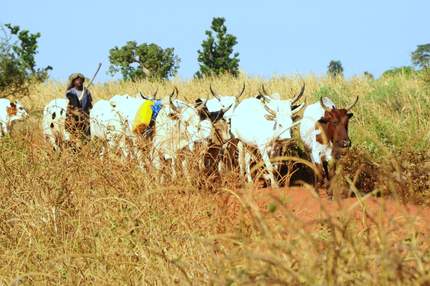
The three main themes of The Second Global Conference on Agricultural Research for Development (GCARD2) are:
- Foresight for Impact- Matching research priorities to future development needs
- Partnerships for impact
- Capacity development for impact
So what are these elements, their corresponding outcomes and their links to the conference themes?
Theme “F”: Foresight for Impact:
GCARD2 offers a chance for all stake holders to think beyond the conference to see ways in which the future agricultural challenges present themselves and the needs of smallholder farmers can help in shaping the process of agricultural innovation.
Expected Outcome I: Through a Global Foresight Hub, collective actions will be agreed upon with the major purpose of bringing together all analyses and reviews of future Agricultural Research For Development (AR4D) needs from all international, regional and national stakeholders. This will form part in creating better policies and in so priorities for research oriented organizations.
Theme “P”: Partnerships:
As the old adage goes; No man is an island. In the same way, no organization, no matter how good it is, survives in a vacuum. The same applies to GCARD2 as it looks for partnerships along its areas of research and development that will help reaching the aim of improving the lives of millions of people in the world.
Expected Outcome II: there is a great likelihood of success on the side of impacts for smallholders. This is for the mere fact that there will be agreements on common purposes and mutual commitments to the objectives of CGIAR Research Programs (CRPs) and other global partnerships programs.
Theme “C”: Capacity Development:
Institutional Learning and empowerment of Youths
Looking closer we see few youths interested in agricultural related careers with particular interest women. What new skills and capabilities do you feel are lacking? How can we attract and retain young people in these agricultural careers? GCARD2 will focus on determining investment needs in various levels of agricultural research and development for different generation groups.
Expected Outcome III: A spring up of major new initiatives globally, launched to address capacity needs in the areas of investment and careers. This in turn will lead to increased investments, creation of more attractive agricultural careers and key barriers to the impact of agricultural research and innovation addressed.
Empowerment of Women
According to Food and Agricultural Organization (FAO) in The State of Food and Agriculture , women play a vital role in advancing agricultural development and food security. They are efficient agricultural producers and can achieve higher yields given the same resources their counterpart men are given. And agricultural research definitely needs more of them as African Women in Agricultural Research and Development demonstrates in their working. GCARD looks in to the specific needs of women producers and puts them central in the process of agricultural research and rural development.
Expected Outcome IV: Creation of Collective actions committed to reshape AR4D systems to better reflect women’s perspectives and enable their direct access to innovation products and services.
Reporting Framework:
The GCARD2 offers a chance for all stakeholders, sectors and regions to report on their activities and the progress they have achieved in the delivery of GCARD Roadmap. This will help in creating check points of where they stand at present, what went well and what could have been done in a much better way.
Expected Outcome V: There will be a demonstration of renewed commitments to transforming and strengthening AR4D systems at international, regional and national levels. This will form the basis for GCARD3 in 2014.
This blogpost was written by Emmie Kio and uploaded by Robert Kibaya, two of the GCARD Social Reporters for the GCARD2 Conference .Original post can be found at http://gcardblog.wordpress.com/2012/10/12/road-from-gcard1-to-gcard2/
Picture courtesy Peter Casier/CCAFS
No comments:
Post a Comment